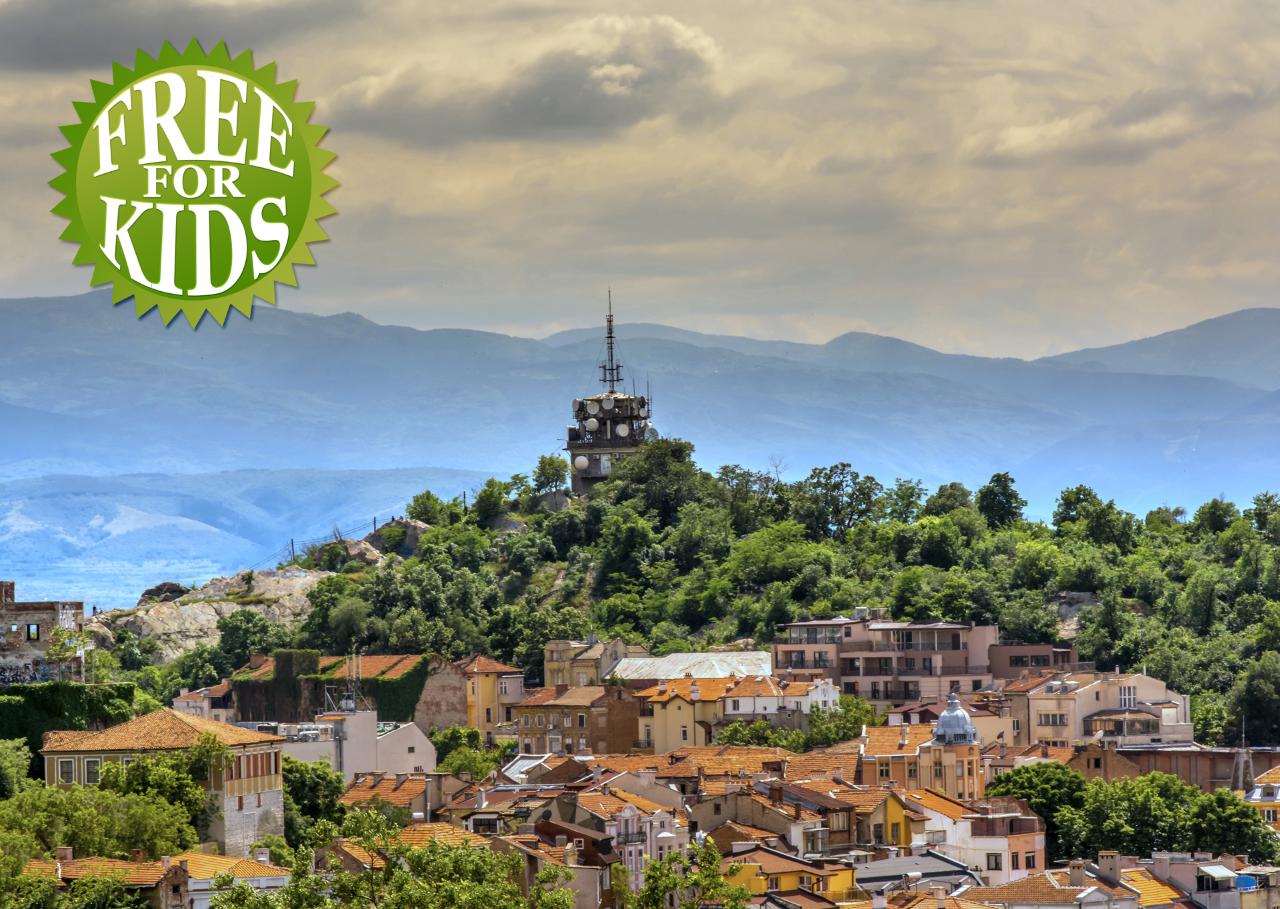Plovdiv - Seven hills in one day

- Duration: 5 Hours (approx.)
- Location: Plovdiv
- Product code: 7HPLD
About
Spend the day walking around Plovdiv's famous seven hills and learn what their names mean.
Highlights
- The seven hills of Plovdiv
- Family friendly
- The Clock tower
- The Roman acqueduct
- Learn about the history of Plovdiv on a deeper level
Description
We will start our tour from the Roman stadium at the centre and head to the Old Town, where we will visit three of the hills.
Nebet tepe, Taxim tepe and Dzhambaz tepe form the so-called Three Hills or Trimontium.
The first settlement, found at Nebet tepe, dates back to 4000 BC, as well as the remains of an old Thracian fortress were. Its name is derived from from the Turkish words nevbet (meaning "guard") and “tepe” (hill), or the Hill of the guards, because it is believed that in old times the garrison that protected the city was located there.
Next we head to Dzhambaz tepe, which owes its name to the steep rocks on the south-east side, where tightrope walkers and acrobats gave their performances during antiquity. At the foot of the hill is the so-called Monday market (Ponedelnik pazara) and at the south-west side is the Ancient Roman Theatre which accommodated up to 7000 spectators. It was built at the beginning of the 2nd century AD, during the reign of emperor Trayan.
Later we move on to Taxim tepe, named after the Arabic word “taksim” meaning “allocation”, related to the place where the water of the ancient Roman aqueduct was gathered and then spread in different directions throughout the Three Hills.
After that we will visit the commemorative place of Markovo tepe. Unfortunately, it has been demolished between the late 19th to the middle of the 20th century, because its syenite blocks were used as pavement material not only in Plovdiv, but in Europe as well. A shopping mall was constructed and opened in 2017 at the spot.
The name of Sahat tepe, with the famous Clock tower at the top, comes from the Turkish word “saat” which means clock. The tower was built in the 16th century and is amongst the oldest in Eastern Europe. It is believed that during Roman times at the top of the hill there was a temple of the goddess Venus. Additionally, the hill has one other name – Danov hill – dedicated to the famous Bulgarian teacher, book publisher and mayor of Plovdiv (1896-1899) , Hristo G. Danov.
The Hill of Liberators or Bunardzhik is our next stop. The hill is dedicated to the Russian soldiers who died in the Russo-Turkish War for the liberation of Plovdiv and Bulgaria. At the top of the hill there is a big monument of a Russian soldier, called Alyosha, which is synonymous with the other names. The Turkish word bunar, meaning “well” was used to describe the numerous water sources found at the hill.
The Youth hill is where our tour ends. It is the highest amid all other hills and also known as Dzhendem tepe, which translates as “the hell hill” from Turkish. In fact, this mound has a great deal of different names. For example – The hill of the Dryad nymphs, Dzhin tepe (the hill of the spirits), Chigdem tepe (the hill of the crocuses). The name Youth hill was first used at the second half of the 20th century, because of the youth brigades who built the scenic path to the top of the hill. In a close proximity is the Roman aqcueduct.
The price includes
- Professional tour guide
Notes
Wearing comfortable shoes is recommended.
tepe = hill




